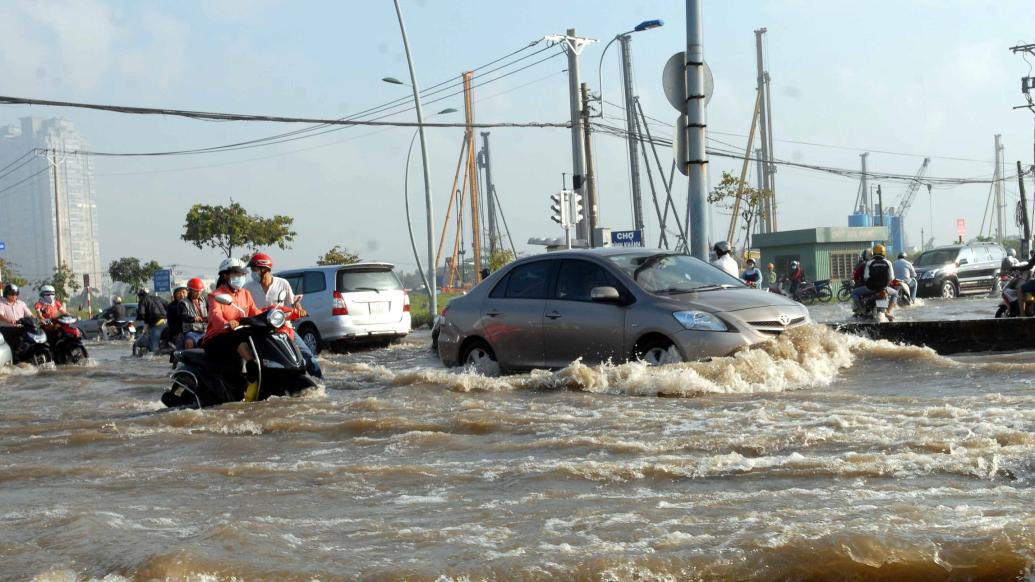

Ho Chi Minh City, Vietnam is sinking 16.2mm per year. Image Credit: Shutterstock/Nguyen Quang Ngoc Tonkin
Nearly all of the 48 most populous coastal cities are sinking faster than sea levels are rising, according to a study published Sept. 12 in Nature Sustainability.
Globally, sea levels are rising by an average of about 3.7mm per year, much of which is caused by melting ice caused by climate change. In many places, groundwater extraction, oil and gas extraction, and sediment compacted by heavy construction have caused land to sink. This process is called land subsidence.
Cheryl Tay and colleagues at Nanyang Technological University in Singapore used satellite radar to measure subsidence rates in 48 of the world's most populous coastal cities between 2014 and 2020.
In 44 of those cities, the fastest subsidence areas are sinking faster than sea levels are rising, the study showed. Some cities in South and Southeast Asia are sinking the fastest. For example, Ahmedabad, India, is sinking at a rate of more than 20mm per year.
Median sink rates ranged from 16.2mm per year to 1.1mm per year. The rates were not adjusted for other factors that could raise or lower land heights, such as the rise of land that was once compacted by ice, thousands of years after the ice melted. The researchers measured all areas within the city's boundaries, even if it was several kilometers from the coast.
In the case of Ho Chi Minh City, Vietnam, researchers found that if the current rate of subsidence continued until 2030, an additional 20 square kilometers would be below sea level and potentially submerged. Without land subsidence, about 880 square kilometers of land would lie below sea level. In addition, Rio de Janeiro, Brazil, may have an additional 2 square kilometers submerged. This means that the submerged area has increased by 16% compared to the situation without subsidence.
Manoochehr Shirzaei of Virginia Tech said the elevation maps used in case studies to estimate flood levels were unreliable in many areas. Also, focusing on the fastest-sinking inland areas of the city, rather than areas directly on the coast, may "exaggerate" the impact of land subsidence.
A recent report by the Intergovernmental Panel on Climate Change (IPCC) looked at land-level changes in coastal regions around the world over a century and found the fastest subsidence rates were 5.2mm per year. If the reported subsidence rate continues, it could become "a very important driver" of sea-level-related risk, said Robert Kopp of Rutgers University in the US, who led the IPCC report.
"Land subsidence has always been seen as a secondary issue, and this study puts it in the spotlight," Shirzaei said.
Related paper information:
https://doi.org/10.1038/s41893-022-00947-z
(Original title "Global Coastal Cities Sinking Faster Than Sea Level Rising")